Why Understanding Attachment Styles Matters in Marriage
Every couple brings their own emotional history into their relationship. Our earliest bonds with caregivers—how we were comforted, heard, and seen—create invisible “blueprints” that influence how we give and receive love as adults.
That’s what attachment theory helps us understand: why some couples feel secure and connected, while others constantly chase or withdraw.
When you recognize your attachment style (and your spouse’s), you gain the power to break old patterns, build safety, and create the deep emotional intimacy that all healthy marriages need.
(If your relationship feels stuck in cycles of blame or distance, explore how Imago Relationship Therapy can help you reconnect with empathy.)
What Is Attachment Theory?
Attachment theory was first developed in the 1950s by British psychoanalyst Dr. John Bowlby and later expanded by Mary Ainsworth. Their research showed that how we bonded with our caregivers as children deeply impacts how we bond with romantic partners later in life.
A child who was nurtured and made to feel safe tends to develop secure attachment. A child who experienced inconsistency, rejection, or emotional neglect may develop insecure attachment—which often shows up as anxiety, avoidance, or a mix of both in adulthood.
Understanding these attachment patterns can be the key to improving communication, reducing reactivity, and cultivating more trust in your marriage.
The Four Attachment Styles in Relationships
1. Secure Attachment
Securely attached partners generally have healthy, balanced relationships. They are comfortable with both intimacy and independence.
Traits of secure attachment:
-
Offer support when their spouse is distressed
-
Communicate honestly and directly
-
Feel comfortable asking for help or reassurance
-
Respect personal boundaries and autonomy
A securely attached marriage feels emotionally safe. Both partners know they can depend on each other without losing their individuality.
2. Anxious / Preoccupied Attachment
Anxiously attached partners crave closeness but often fear rejection or abandonment. Their emotional radar is finely tuned to any perceived signs of disconnection.
Traits of anxious attachment:
-
Seek constant reassurance and validation
-
May appear “clingy” or overly dependent
-
Overanalyze partner’s words or behaviors (“He’s distant—did I do something wrong?”)
-
Experience emotional highs and lows depending on partner’s responsiveness
Over time, this pattern can exhaust both partners, but with awareness and communication, anxious partners can learn to self-soothe and trust love that feels consistent.
3. Dismissive / Avoidant Attachment
Avoidantly attached partners value independence and often equate emotional closeness with loss of control. They tend to withdraw during conflict or discomfort.
Traits of avoidant attachment:
-
Struggle to express vulnerability or affection
-
Appear emotionally distant or detached
-
May say things like “I don’t need anyone” or “I’m fine” when upset
-
Feel overwhelmed by their partner’s emotional needs
Avoidant partners often fear being let down, so they protect themselves by staying “safe” behind walls. Healing involves learning that closeness doesn’t equal weakness.
4. Fearful / Disorganized Attachment
Fearful-avoidant (disorganized) attachment combines both anxious and avoidant traits. These partners often crave intimacy but simultaneously fear being hurt.
Traits of fearful-avoidant attachment:
-
Swing between intense closeness and sudden withdrawal
-
Struggle with trust due to early trauma or inconsistent caregiving
-
Feel overwhelmed by their emotions
-
Experience volatile, “push-pull” relationships
This pattern often stems from unresolved trauma, but with compassion and structure, healing is possible. Many couples find relief when they learn to identify and soothe these attachment triggers together.
How Attachment Styles Affect Marriage
Your attachment style can influence:
-
Communication patterns (Do you express or suppress feelings?)
-
Conflict resolution (Do you pursue or avoid when hurt?)
-
Emotional intimacy (Do you feel safe being fully seen?)
-
Trust and dependency (Do you rely on your spouse—or fear relying on them?)
The good news? Attachment styles are not destiny. They can evolve through conscious effort, therapy, and consistent, loving interactions.
(Learn more about emotional safety through The 5-Step Plan to a Happy Marriage).
Healing Attachment Wounds in Marriage
If you and your spouse identify with different attachment styles, don’t panic—that’s common. Healing starts with awareness and compassion.
Here are a few tips:
-
Name your triggers. Recognize what behaviors make you feel unsafe or unseen.
-
Create structure. Predictability builds safety for both anxious and avoidant partners.
-
Use intentional dialogue. Practice listening to understand, not to fix or defend.
-
Seek support. A therapist trained in relational modalities can guide you toward security.
With time, patience, and consistent care, even deeply ingrained patterns can shift toward secure attachment.
Key Takeaways
-
Attachment theory helps explain why you and your spouse react differently during conflict.
-
The four attachment styles—secure, anxious, avoidant, fearful—affect emotional intimacy and trust.
-
Your style is not fixed; with self-awareness and support, it can change.
-
Building a secure marriage starts with safety, empathy, and open communication.
About the Author
Written by Rabbi Shlomo Slatkin, MS, LCPC, Licensed Clinical Professional Counselor and Advanced Imago Relationship Therapist. Shlomo helps couples heal from communication breakdowns, trauma, and emotional disconnection through The Marriage Restoration Project’s private intensives and workshops.
Sources
-
Bowlby, J. (1969). Attachment and Loss.
-
Ainsworth, M. (1978). Patterns of Attachment: A Psychological Study of the Strange Situation.
-
The Marriage Restoration Project. “How to Reconnect With Your Spouse After a Fight.”
-
The Marriage Restoration Project. “The 5-Step Plan to a Happy Marriage.”






